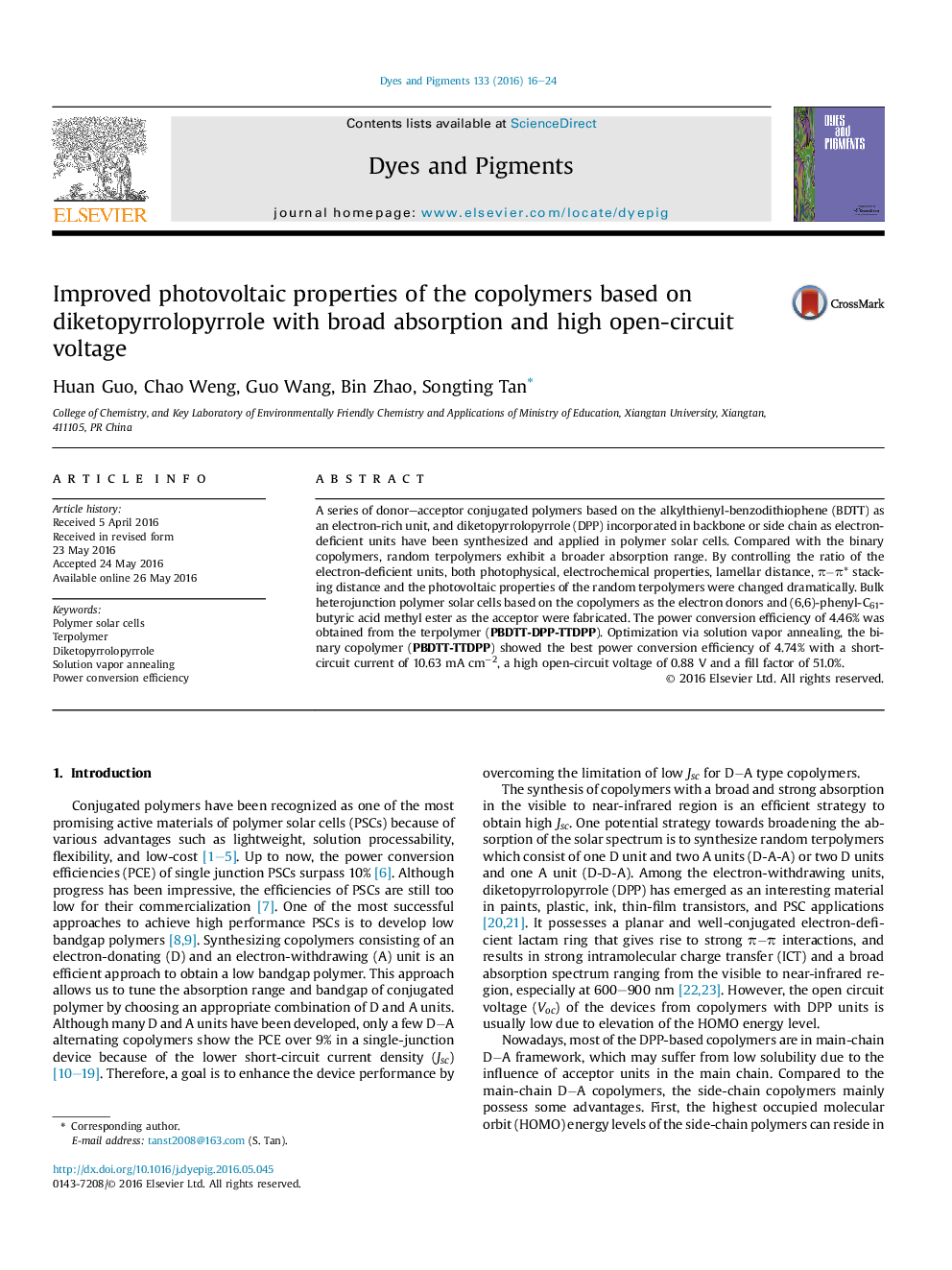| Article ID | Journal | Published Year | Pages | File Type |
|---|---|---|---|---|
| 175363 | Dyes and Pigments | 2016 | 9 Pages |
•The five copolymers were synthesized and applied in polymer solar cells.•The terpolymer PBDTT-DPP-TTDPP obtained a PCE of 4.46%.•The binary copolymer PBDTT-TTDPP obtained a PCE of 4.74% after THF vapor annealing.
A series of donor–acceptor conjugated polymers based on the alkylthienyl-benzodithiophene (BDTT) as an electron-rich unit, and diketopyrrolopyrrole (DPP) incorporated in backbone or side chain as electron-deficient units have been synthesized and applied in polymer solar cells. Compared with the binary copolymers, random terpolymers exhibit a broader absorption range. By controlling the ratio of the electron-deficient units, both photophysical, electrochemical properties, lamellar distance, π−π* stacking distance and the photovoltaic properties of the random terpolymers were changed dramatically. Bulk heterojunction polymer solar cells based on the copolymers as the electron donors and (6,6)-phenyl-C61-butyric acid methyl ester as the acceptor were fabricated. The power conversion efficiency of 4.46% was obtained from the terpolymer (PBDTT-DPP-TTDPP). Optimization via solution vapor annealing, the binary copolymer (PBDTT-TTDPP) showed the best power conversion efficiency of 4.74% with a short-circuit current of 10.63 mA cm−2, a high open-circuit voltage of 0.88 V and a fill factor of 51.0%.
Graphical abstractFigure optionsDownload full-size imageDownload as PowerPoint slide
